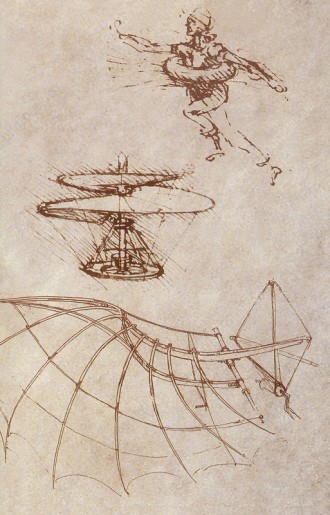The Young Scientist
The Young Scientist
March 25, 2024By Aileen O’Catherine

Leonardo da Vinci was a genius. He was ahead of his time and delved into STEAM (science, technology, engineering, art and mathematics) long before it became a term. Although he is well known for his painting the “Last Supper” and his portrait “Mona Lisa,” his vast curiosity propelled him to move beyond painting and deeply explore architecture, anatomy, mathematics, geometry, sculpting, zoology, botany, geology, optics, aerodynamics, hydrodynamics and more. He understood the forces of physics so well that he improved upon the machines of his day and went on to become an inventor of new, unheard of and incredibly imaginative machines. The term for someone knowledgeable in so many areas is polymath, and Leonardo da Vinci was one.
Born in Italy on April 15, 1452, da Vinci grew up in the time known as the High Renaissance, a period in European history when many new ideas were being developed and new technologies were being explored. As a young man, he was apprenticed to learn painting and soon developed a method of close observing and perceiving that was to become the foundation for his scientific inquiries. He looked carefully, then repeated his observations in testing. He then illustrated his subject or phenomenon with notes of explanation. Da Vinci was a natural problem solver and engineer. In 1487, as he considered human proportions and their relationship to buildings and architecture, he composed the pen and ink drawing known as the Vitruvian Man, one of the world’s most famous icons. It shows a man in two superimposed positions, with his arms and legs apart within a square and a circle. The illustration depicts perfect proportions. Architecture is about symmetry, or balanced proportions. The proportions of da Vinci’s Vitruvian Man have been used to develop concepts in architecture.
Da Vinci also explored the principles of machines. He created the ornithopter, a device with flapping wings that could in theory be attached to a human to achieve flight. His ornithopter was a kind of ancient hang glider. However, given the physical limitations of human endurance, da Vinci’s ornithopter was not practical. But like a good scientist, his failure propelled him to find out more and ask himself the question, “Why do birds fly?” Da Vinci observed, sketched and examined the flights of birds and created a scientific notebook on the subject, his “Codex on the Flight of Birds.” Remarkably, centuries before the concept of building a successful airplane was born, da Vinci conceived of human flight. Leonardo da Vinci may have lived a Renaissance life, but he strode in thought with the modern world.
For those curious about Leonardo da Vinci, a temporary exhibit at the National Museum of Nuclear Science & History in Albuquerque explores his machines. Interactive, full-sized models of his machines can be examined and explored. Machines include da Vinci’s air screw, a spring-powered car and a hang glider. Hands-on activities include building a parachute. Informational panels tell the story of da Vinci’s machines, and images of his original designs such as “Vitruvian Man” and the “Mona Lisa” are also on display.
The exhibit’s interactive models were built by the Artisans of Florence, a group dedicated to recreating models from the past that can be explored today. The artisans specialize in reconstructing lost technology (also called forensic archaeology). The show runs through May 16.
To learn more:
National Nuclear Museum
https://www.nuclearmuseum.org/see/exhibits/davinci-machines-the-exhibition
Artisans of Florence
https://artisansofflorence.com/




